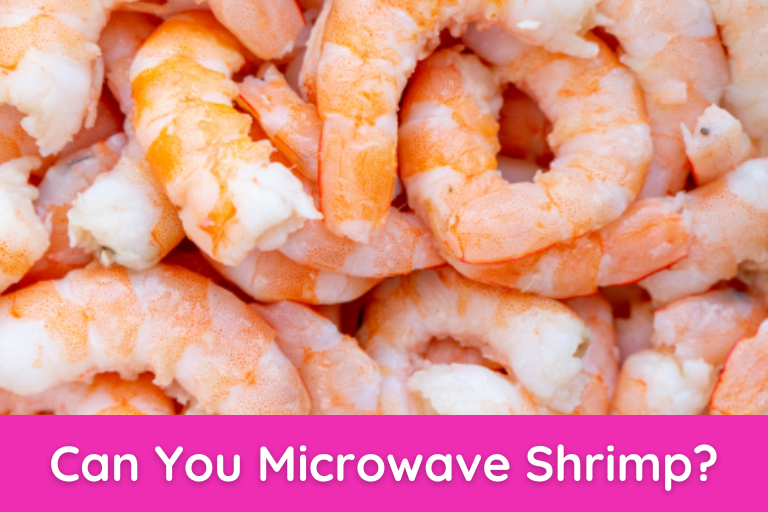Shrimp is a delicious and versatile seafood that can be cooked in various ways. But what about microwaving shrimp? Is it safe to do so, or are there risks that should be considered?
In this guide, we will explore whether you can microwave shrimp, how to do it safely, and offer some alternative cooking methods to consider.
Can you microwave raw shrimp?
Cooking raw shrimp in the microwave is not recommended. Raw seafood can contain harmful bacteria that can cause foodborne illness if not cooked to a safe internal temperature. While microwaves can cook food quickly, they can also create hot spots that may cook the shrimp sparingly.
Additionally, microwaving raw shrimp can result in an unappetizing rubbery texture. Instead, it’s best to cook raw shrimp using other methods such as boiling, grilling, or sautéing.
Boiling shrimp is a popular method for cooking raw shrimp, and it’s relatively easy. Bring a pot of water to a boil, add the shrimp, and cook for two to three minutes until the shrimp turns pink and opaque. Then drain the shrimp and serve.
Grilling shrimp is another great option. Skewer the shrimp and grill on each side for two to three minutes until pink and opaque. You can also brush the shrimp with butter or marinade for added flavor.
Sautéing shrimp is a quick and easy way to cook shrimp. Heat a skillet over medium-high heat and add a tablespoon of oil or butter. Then add the shrimp and cook for two to three minutes until pink and opaque.
Can you microwave cooked shrimp?
Reheating cooked shrimp in the microwave is safe, but there are a few things to remember. First, store your cooked shrimp in the refrigerator within two hours of cooking. Shrimp can spoil quickly, so it’s important to store it properly to avoid foodborne illness.
To reheat cooked shrimp in the microwave, place it in a microwave-safe dish and cover it with a damp paper towel. Microwave for 30 seconds, then check the shrimp to see if it is hot. If not, continue microwaving in 10-second intervals until it reaches the desired temperature.
It’s important to note that microwaving shrimp can cause it to become tough and rubbery if overcooked. To avoid this, check the shrimp’s internal temperature and remove it from the microwave once it reaches 145°F.
Tips for microwaving shrimp safely
If you do decide to microwave shrimp, here are a few tips to keep in mind:
- Use a microwave-safe dish: Make sure the dish you use is safe for use in the microwave.
- Cover the shrimp: Covering it with a damp paper towel can help prevent it from drying out.
- Check the temperature: Use a food thermometer to ensure the shrimp reaches a safe internal temperature of 145°F.
- Avoid overcooking: Overcooking can cause the shrimp to become tough and rubbery. Please remove it from the microwave once it reaches the desired temperature.
How long to microwave shrimp?
Microwaving shrimp is not recommended as it can result in rubbery and overcooked shrimp. It is best to cook shrimp using traditional methods such as boiling, grilling, or sautéing. If you want to reheat cooked shrimp in the microwave, place them in a microwave-safe dish and cover them with a damp paper towel. Heat on high for 30-second intervals until heated through.
How to steam shrimp in the microwave?
Although it’s not recommended to steam shrimp in the microwave because it can result in overcooked shrimp or uneven cooking, you can still try it if you want. Here’s a quick guide on how to steam shrimp in the microwave:
Step 1: Place the shrimp in a microwave-safe dish or a steamer basket.
Step 2: Add about 1/4 cup of water to the dish or steamer basket. There should be enough water to create steam, but not so much that the shrimp sit in the water.
Step 3: Cover the dish or steamer basket with a microwave-safe lid or plastic wrap.
Step 4: Microwave on high for about 2-3 minutes or until the shrimp are pink and opaque.
Step 5: Remove the dish or steamer basket from the microwave using oven mitts or a kitchen towel, and let it sit for a minute or two before removing the lid and serving.
Remember to be careful when removing the dish or steamer basket from the microwave, as it will be very hot. Additionally, monitor the cooking time carefully, as microwave wattages can vary, and overcooked shrimp can be rubbery and tough.
Conclusion
In conclusion, while you can microwave cooked shrimp safely, cooking raw shrimp in the microwave is not recommended. Instead, consider other cooking methods such as boiling, grilling, or sautéing for raw shrimp. If you decide to microwave shrimp, follow safety guidelines, including using a microwave-safe dish, covering the shrimp, checking the temperature, and avoiding overcooking. By following these tips, you can enjoy delicious, safely cooked shrimp in the comfort of your own home.




